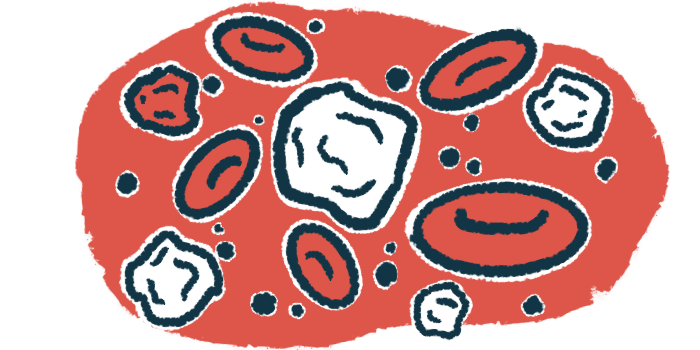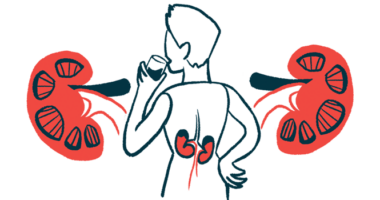Scientists ID CD11b as potential biomarker of kidney disease in AAV
Protein levels linked to AAV-related inflammation, signs of kidney damage

CD11b, a protein found on the surface of neutrophils — immune cells that are first responders in fighting infections in the body — may be a biomarker of kidney disease in people with ANCA-associated vasculitis (AAV), according to a new study from researchers in China.
Levels of activated CD11b on neutrophils correlated with standard biomarkers for AAV-related inflammation and kidney function impairment, as well as signs of kidney damage, the research showed.
The team noted that “exploring the potential regulatory mechanisms involved in neutrophil CD11b activation … might provide novel insights into therapeutic strategies for AAV.”
Their study, “Neutrophil CD11b is a pivotal PANoptosis marker correlated with disease activity in antineutrophil cytoplasmic antibody-associated vasculitis,” was published in the journal Apoptosis.
“To the best of our knowledge, our current study is the first to provide direct evidence of activated CD11b on circulating neutrophils in AAV patients and to establish a link between this activation and disease activity,” the researchers wrote.
In AAV, self-reactive antibodies called antineutrophil cytoplasm antibodies, or ANCAs, abnormally activate immune neutrophils. This leads to an inflammatory attack on the cells that line blood vessels, particularly small blood vessels, resulting in AAV symptoms.
“Dysregulated neutrophil death has been implicated in promoting neutrophil … activation,” the researchers wrote, adding that “PANoptosis, an inflammatory programmed cell death, participates in the development of various autoimmune diseases.”
Programmed cell death is a process in which damaged or abnormal cells self-destruct to prevent unwanted growth that may drive disease. PANoptosis shows key features of all of the three main forms of programmed cell death pathways, including cell rupture and inflammation.
Research compared kidney samples from AAV patients vs. healthy people
Here, a team from the Peking University Institute of Nephrology in Beijing set out to identify PANoptosis-related biomarkers in AAV and investigate their association with disease activity.
The researchers first compared gene activity in kidney samples from 18 healthy individuals and 22 AAV patients with glomerulonephritis, a type of AAV-related kidney disease marked by inflammation of the kidney’s filtering units.
Among the PANoptosis-related genes showing significantly different activity between patients and healthy controls, two showed the strongest link with AAV: CD11B and TIMP1.
The team then found that levels of CD11b, the protein encoded by CD11B, were significantly higher in circulating neutrophils from a mouse model of AAV-related glomerulonephritis than in those from healthy mice.
In contrast, neutrophils produced a small amount of the Timp1 protein, and there was no significant difference between AAV and healthy mice.
“These results suggested that CD11B was the key PANoptosis-related gene in AAV, participating in neutrophil-mediated inflammation and PANoptosis,” the team wrote.
CD11b is an integrin, a group of proteins found on the cell surface that are involved in cell-to-cell interaction and communication. When activated, CD11b helps immune cells like neutrophils stick to blood vessel walls, which allows the cells to migrate to sites of inflammation within tissues.
CD11B named as ‘pivotal gene’ in type of cell death in AAV
To further investigate CD11b as a potential AAV biomarker, the team analyzed circulating neutrophils in blood samples from 62 adults with active AAV and 62 age- and sex-matched healthy controls. The levels of activated CD11b in neutrophils were significantly higher in AAV patients compared with the control group, the researchers found.
Such higher levels of activated CD11b were significantly associated with increased AAV activity, as assessed by Birmingham Vasculitis Activity Scores (BVAS). Other correlated indicators of elevated AAV activity included higher blood levels of C-reactive protein, an inflammatory marker, and creatinine, a marker of kidney problems, as well as a higher proportion of cellular crescents, a sign of severe damage in glomerulonephritis, on kidney samples.
In AAV patients, higher levels of activated CD11b on neutrophils were also significantly linked to higher CD11b levels in urine and with more CD11b deposits in kidney tissues. There was no relationship between levels of activated neutrophil CD11b and blood CD11b levels, the team found.
[The] level of activated CD11b on neutrophils was associated with disease activity of AAV patients.
Experiments investigating molecular mechanisms showed that blood from AAV patients, but not from healthy controls, promoted the production of activated CD11b and triggered PANoptosis in neutrophils.
This AAV blood-induced activation was blocked by a molecule that boosts the PPAR-alpha signaling pathway, which is known to regulate the metabolism of fatty molecules called fatty acids. This pathway was found to be significantly suppressed, and fatty acid metabolism significantly impaired, in neutrophils from mice with AAV-related glomerulonephritis.
This study identified “CD11B as the pivotal gene of PANoptosis,” and the “level of activated CD11b on neutrophils was associated with disease activity of AAV patients,” the researchers wrote. “Furthermore, we demonstrated a link of intracellular fatty acid metabolism with neutrophil CD11b activation and PANoptosis in AAV.”
The team called for additional research “to elucidate the underlying mechanisms bridging immunometabolism and immunogenic cell death in AAV.” Immunogenic cell death refers to any type of cell death triggering an immune response, as that is thought to occur in AAV.








